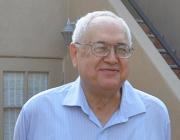Date Published:
OCTAbstract:
There has been a lot of speculation about the role of water in gas phase reactions involving neutrals, radicals and ions. The reaction of NO and OH has attracted a lot of attention in the past due to its relevance for ozone chemistry in the atmosphere. In the present contribution we report low temperature measurements of the recombination of OH and NO at low temperatures in Laval nozzle expansions between 300 and 60 K. We find an increase of the bimolecular rate constant in the presence of water of up to 40%. This effect has been attributed to water molecules acting either as an efficient collider releasing energy from the intermediate (in collisions) or which is more likely for the present experimental conditions - as a cluster partner of the reaction intermediate HONO that also dissipates energy via cluster dissociation, which can in turn both stabilize the reaction intermediate, decrease back reaction to OH and NO, and enhance finally the overall reaction to the products. The supersaturation of water vapor in the cold Laval nozzle expansion strongly favors the formation of clusters in the nozzle throat; their exact concentration is, however, difficult to estimate due to non-equilibrium conditions. The possible role of clusters in the recombination of OH and NO is investigated using ab initio molecular dynamics calculations. Beyond the reaction intermediate HONO and intramolecular proton transfer events also transient HOON was observed in the theoretical study.
